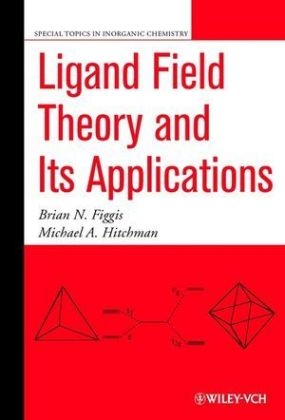Read more
Zusatztext "...[the authors] explain how it [Ligand field theory] is used to interpret the physical properties of the complexes." (SciTech Book News! March 2001)"...serves its purpose with clarity." (Aslib Book Guide! July 2000)"...a well balanced! practical! and readable monograph on an attractive area of inorganic chemistry." (Angewandte Chemie International Edition! Vol. 40 No. 10) Informationen zum Autor BRIAN N. FIGGIS, DSc, is Professor of Inorganic Chemistry at the University of Western Australia. MICHAEL A. HITCHMAN, DSc, is Reader in Chemistry at the University of Tasmania. Klappentext A complete, up-to-date treatment of ligand field theory and its applications Ligand Field Theory and Its Applications presents an up-to-date account of ligand field theory, the model currently used to describe the metal-ligand interactions in transition metal compounds, and the way it is used to interpret the physical properties of the complexes. It examines the traditional electrostatic crystal field model, still widely used by physicists, as well as covalent approaches such as the angular overlap model, which interprets the metal ligand interactions using parameters relating directly to chemical behavior.Written by internationally recognized experts in the field, this book provides a comparison between ligand field theory and more sophisticated treatments as well as an account of the methods used to calculate the energy levels in compounds of the transition metals. It also covers physical properties such as stereochemistry, light absorption, and magnetic behavior. An emphasis on the interpretation of experimental results broadens the book's field of interest beyond transition metal chemistry into the many other areas where these metal ions play an important role.As clear and accessible as Brian Figgis's 1966 classic Introduction to Ligand Fields, this new book provides inorganic and bioinorganic chemists as well as physical chemists, chemical physicists, and spectroscopists with a much-needed overview of the many significant changes that have taken place in ligand field theory over the past 30 years. Zusammenfassung Die langerwartete aktualisierte Neuauflage des bewährten Klassikers! Seit dem Erscheinen der ersten Auflage ist das Gebiet der Ligandenfeldtheorie förmlich explodiert; inzwischen weiß man auch, wie, warum und unter welchen Voraussetzungen sich die theoretischen Erkenntnisse auf die Praxis übertragen lassen. Dieser einzige moderne Abriß der Ligandenfeldtheorie erläutert Methoden zur Erfassung der Bindungssituation in Übergangsmetallkomplexen sowie Anwendungen zur Interpretation struktureller, spektraler und magnetischer Eigenschaften. (01/00) Inhaltsverzeichnis Quantitative Basis of Crystal Fields. The Angular Overlap Model. The Origin and Calculation of . Energy Levels of Transition Metal Ions. Effect of Ligand Fields on the Energy Levels of Transition Ions. Influence of the d Configuration on the Geometry and Stability of Complexes. The Electronic Spectra of Complexes. Magnetic Properties of Complex Ions. Electron Paramagnetic Resonance Spectra of Complexes. Actinide Element Compounds. Appendices. List of Commonly Used Symbols. Fundamental Constants. Index....

